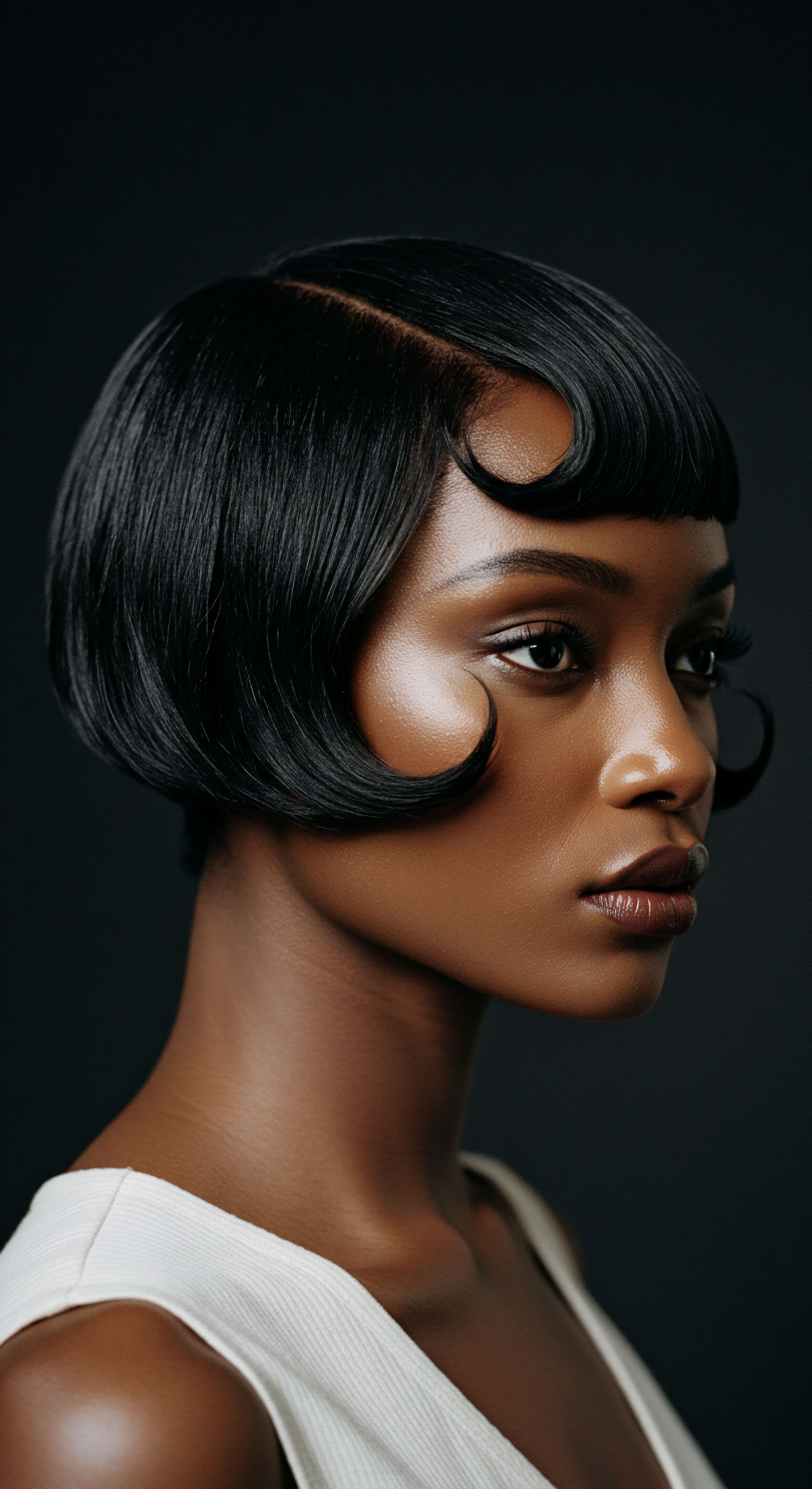
Roots
To truly appreciate the vibrant character of curly hair, one must first turn attention to its most outward yet often misunderstood layer ❉ the cuticle. It stands as the hair’s primary defense, a shield against the world’s elements, a guardian of inner moisture. For those with textured hair, this outermost layer plays a particularly dynamic part, influencing everything from daily appearance to long-term well-being. Consider the delicate balance required for a curl to coil and spring with grace; much of that inherent structure and resilience traces back to the microscopic arrangement of these protective scales.
A deeper connection to our hair begins with understanding these foundational aspects. The way light dances across a healthy curl, or the subtle shift in its feel when humidity arrives, all relate to the cuticle’s condition. It is a constant interplay, a conversation between our strands and their surroundings, where the cuticle speaks volumes about hair’s state and its potential.

Hair Anatomy and Physiology Specific to Textured Hair
The hair strand, a remarkable biological creation, comprises three main layers ❉ the medulla, the cortex, and the cuticle. The medulla, the innermost core, is often absent in finer hair types. Surrounding it is the cortex, the hair’s primary substance, housing the keratin proteins and pigments that give hair its color, strength, and elasticity.
It is within the cortex that the unique shape of curly hair is primarily established, influenced by the asymmetrical or oval shape of the hair follicle from which it grows. A more pronounced oval follicle tends to produce a tighter curl.
The outermost layer, the cuticle, is composed of overlapping, flattened cells, often compared to shingles on a roof. In straight hair, these scales typically lie flat and smooth, creating a uniform surface that reflects light evenly, contributing to a characteristic sheen. For curly hair, the very geometry of the curl introduces a different arrangement.
Due to the bends and twists of the hair fiber, the cuticle scales on curly strands may naturally be slightly raised or unevenly laid at various points along the shaft. This natural lifting means curly hair can be more susceptible to moisture loss and external stressors compared to straight hair.
The cuticle, hair’s outermost shield, is naturally more open on curly strands, influencing moisture balance and external interaction.
The uneven surface of curly hair also means that natural oils, known as sebum, produced by the scalp, face a more circuitous route down the hair shaft. This often results in curly hair being inherently drier at the ends than straight hair, requiring diligent hydration to maintain its supple nature. The interplay of follicle shape, cortex composition, and cuticle arrangement creates the distinct characteristics of textured hair, each component contributing to its unique beauty and specific care requirements.

Hair Porosity and Its Cuticle Connection
Hair porosity describes how well hair absorbs and holds onto moisture, a quality directly linked to the cuticle’s condition. The arrangement of these outermost scales dictates how easily water and products can enter or leave the hair shaft. Understanding one’s hair porosity is a fundamental step in selecting appropriate hair care routines and products.
- Low Porosity Hair ❉ This hair type presents with tightly closed and smooth cuticle scales, making it resistant to moisture absorption. Water tends to bead on the surface rather than soaking in quickly. While challenging to hydrate initially, once moisture penetrates, it is retained well. This characteristic often means products may sit on the hair surface, leading to potential build-up.
- Medium Porosity Hair ❉ Possessing a balanced cuticle layer, medium porosity hair absorbs and retains moisture effectively. The cuticle scales are neither overly open nor overly compact, allowing for good product absorption and moisture retention without excessive loss. Hair with medium porosity typically holds styles well and maintains hydration for several days.
- High Porosity Hair ❉ This hair type features raised or gapped cuticle scales, allowing moisture to enter with ease but also to escape rapidly. High porosity hair often feels dry, appears dull, and is prone to frizz and breakage due to this compromised outer layer. It can be a natural characteristic, particularly for textured hair, or a result of external damage from chemical treatments, heat, or environmental factors.
Hair porosity, governed by cuticle integrity, dictates how strands welcome and retain moisture, a core aspect of hair health.

How Does Cuticle Structure Influence Curly Hair’s Water Absorption?
The inherent curl pattern of textured hair, with its unique twists and turns, means the cuticle layers do not lie as uniformly flat as on straight hair. This structural characteristic contributes to curly hair’s natural tendency towards higher porosity. When the cuticle scales are slightly lifted, they create microscopic gaps and openings along the hair shaft. These gaps act as pathways, making it simpler for water molecules to enter the hair’s inner cortex.
While this increased absorption might seem beneficial, it also means moisture can escape just as quickly, leading to dryness and a heightened susceptibility to environmental humidity. This phenomenon is often experienced as frizz, where the hair attempts to draw moisture from the humid air, causing the lifted cuticles to swell further and create a rough, uneven surface. The delicate balance of water absorption and retention is a continuous challenge for curly hair, directly stemming from the specific arrangement of its cuticle. Maintaining a smooth cuticle surface is thus paramount for curly hair to retain its hydration and definition.

Hair Growth Cycles and Influencing Factors
Hair growth occurs in a cyclical pattern, a biological rhythm that impacts all hair types, including textured strands. This cycle includes three main phases ❉ anagen (growth), catagen (transitional), and telogen (resting/shedding). During the anagen phase, hair cells divide rapidly, forming the hair shaft, with the cuticle cells forming at the base of the follicle and moving upwards.
While the cuticle itself is composed of dead cells once it exits the scalp, its integrity is influenced by factors throughout the hair’s lifespan. Nutritional status, overall health, hormonal shifts, and even stress can affect the quality of the hair fiber produced at the follicle level, indirectly impacting the cuticle’s formation and initial strength. External factors, as the hair grows longer, exert a more direct influence.
Mechanical manipulation, chemical treatments, and environmental exposures all contribute to the wearing away of the cuticle scales, with the oldest parts of the hair, the ends, showing the most wear. For curly hair, which experiences more friction due to its coiling nature, this wear can be more pronounced, making cuticle health a constant consideration from root to tip.
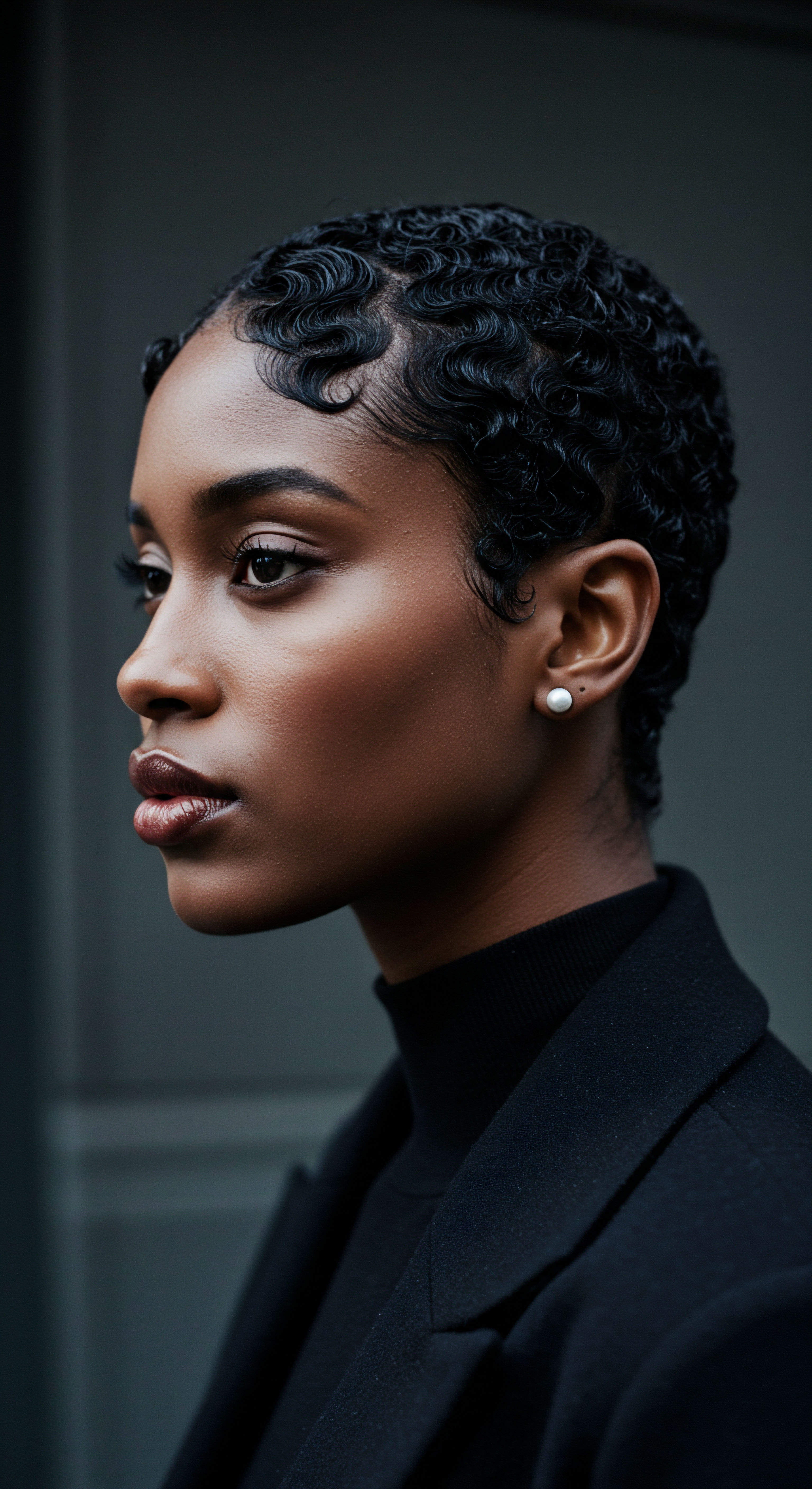
Ritual
Stepping beyond the foundational understanding of the cuticle, we arrive at the daily and periodic practices that shape our hair’s vitality. This section is a guide through the practical wisdom of care, where gentle guidance meets effective methods. It is here that we translate scientific principles into actions, observing how our hands, our tools, and our chosen products interact with the cuticle, coaxing it toward a state of serenity.
The journey of textured hair care is one of mindful ritual, a deliberate approach to nurturing each curl and coil. It calls for an awareness of how every step, from cleansing to styling, either supports or compromises the delicate outermost layer. By making informed choices, we can enhance the hair’s natural beauty and fortify its resilience against the world.
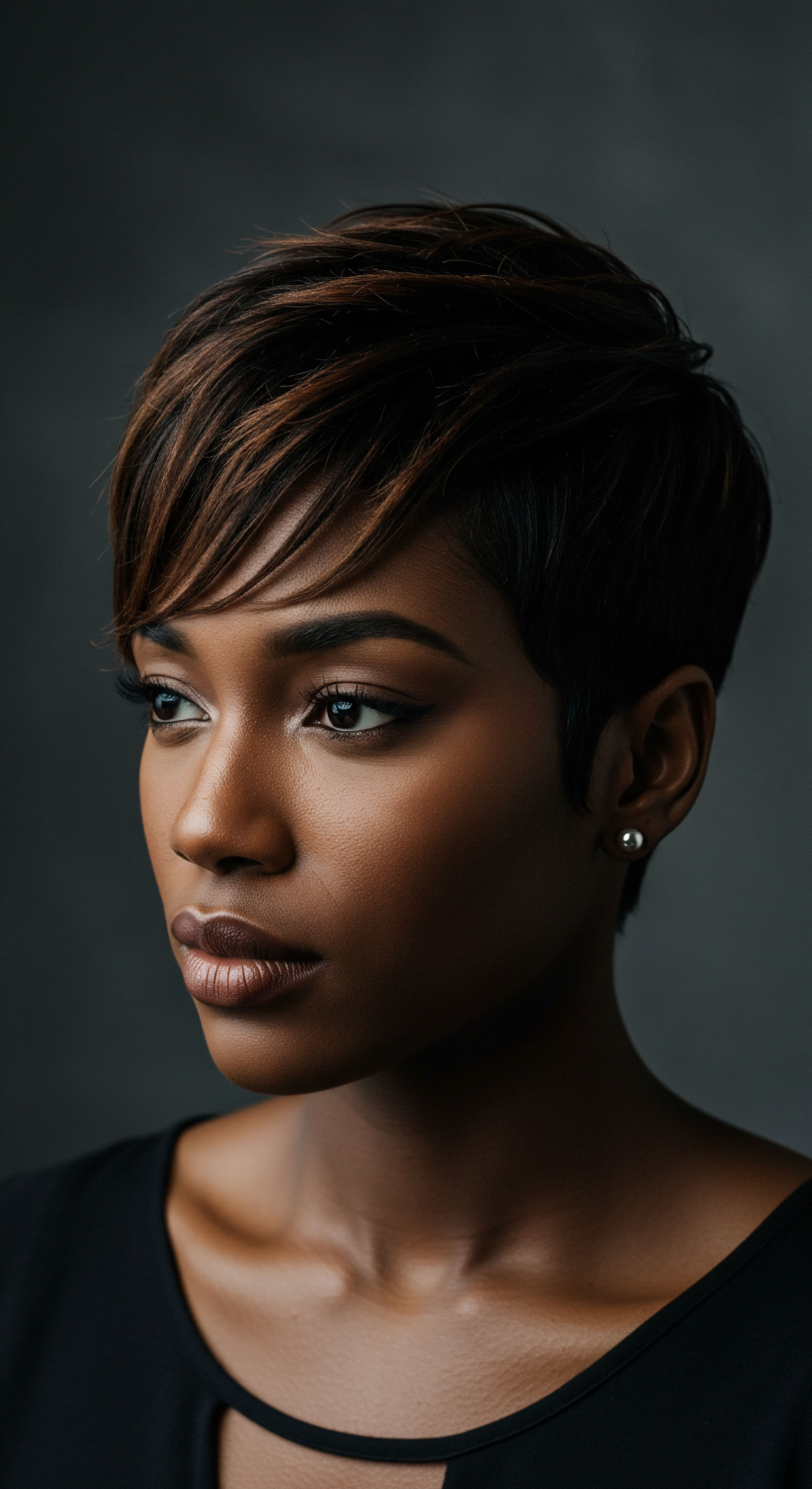
Protective Styling Encyclopedia
Protective styles serve as a shield for textured hair, minimizing manipulation and exposure to environmental stressors, thereby safeguarding the cuticle. When hair is tucked away in braids, twists, or buns, the delicate cuticle scales are less subject to friction from clothing, pillowcases, or daily handling. This reduced mechanical stress is paramount for curly hair, which already has a cuticle prone to lifting due to its natural bends.
Styles like box braids, cornrows, and twists keep the hair stretched and bundled, which can help maintain cuticle smoothness and reduce tangling that might otherwise lead to breakage. Even simpler methods, such as a pineapple updo for sleeping, minimize friction on the hair’s surface, preserving the cuticle’s integrity through the night. The consistent use of protective styles can allow the hair to retain moisture more effectively, as the closed cuticle means less evaporation of water from the cortex. This preservation of moisture helps keep the hair supple and less prone to the dryness that can cause cuticle scales to lift further and lead to breakage.

Natural Styling and Definition Techniques
Achieving defined curls relies heavily on encouraging the cuticle to lie as flat as possible, allowing light to reflect evenly and the curl pattern to clump cohesively. Techniques like “shingling” or “raking” products through wet hair, followed by scrunching, aim to smooth down the cuticle as the hair dries. Applying styling products to wet or damp hair is particularly beneficial because water helps swell the hair shaft slightly, making the cuticle more pliable and receptive to being smoothed.
Using products with ingredients that coat the hair or help seal the cuticle, such as gels or creams, can aid in this process. These products create a film that helps hold the cuticle scales in place, reducing frizz and enhancing shine. Air drying or using a diffuser on a low heat setting with gentle airflow also contributes to maintaining cuticle smoothness, preventing the roughing up that can occur with high-speed drying. The choice of styling tools also matters; wide-tooth combs or fingers are preferred over fine-tooth combs or brushes, especially on dry hair, to minimize mechanical damage to the cuticle.
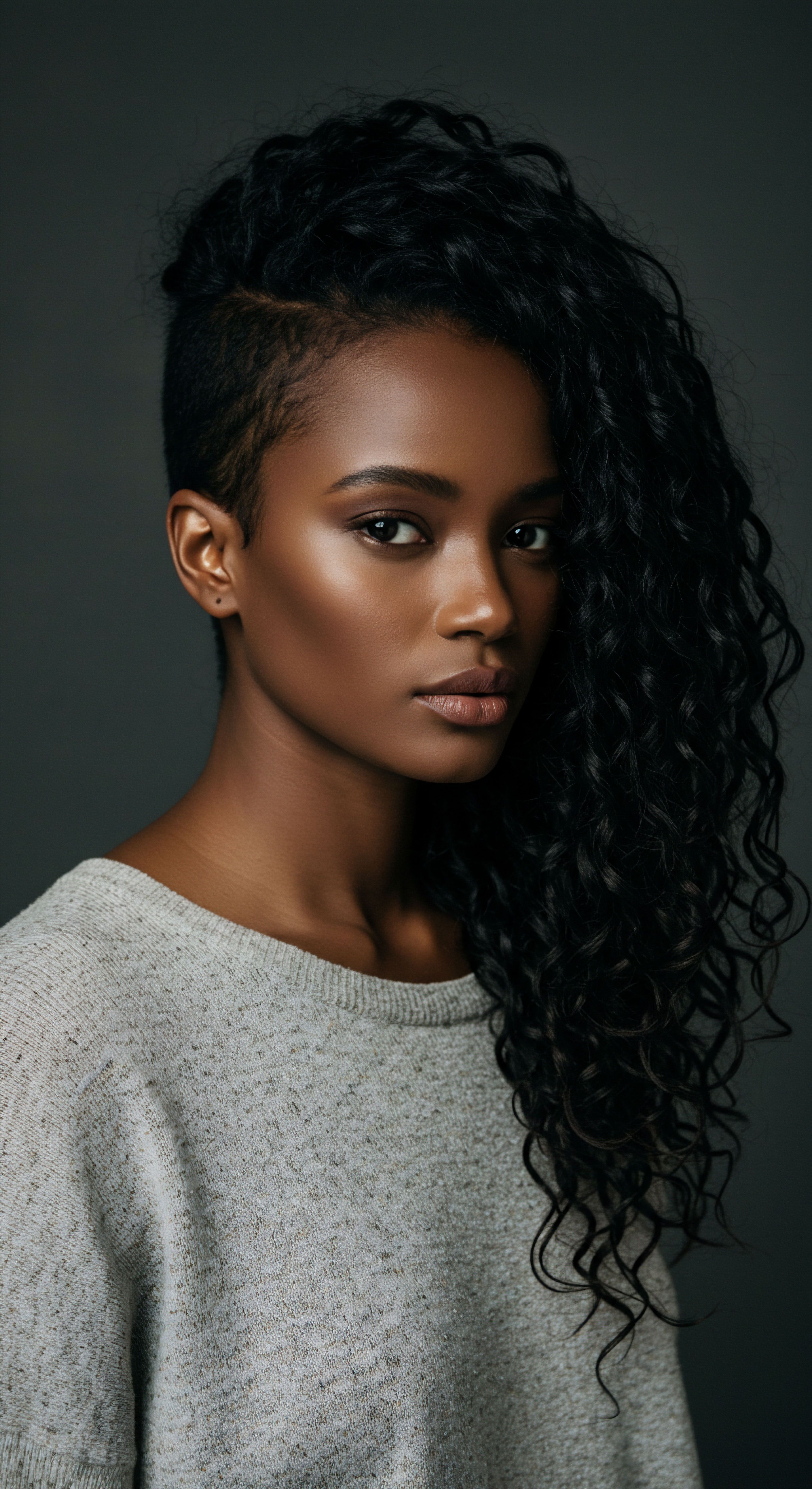
What Role Does Product Application Play in Cuticle Health?
The manner in which products are applied significantly impacts the cuticle’s condition. For low porosity hair, which has tightly closed cuticles, using lightweight, water-based products and applying them to warm, damp hair can assist in slightly lifting the scales to allow for better absorption. Heat, even from a warm towel, can help the cuticle open enough for moisture to enter.
Conversely, for high porosity hair, which has lifted or damaged cuticles, the goal is to seal the scales to retain moisture. This involves using heavier creams, butters, and oils that sit on the surface, creating a protective barrier. Layering products, such as a leave-in conditioner followed by a sealant, helps to lock in hydration.
Protein treatments can also temporarily fill gaps in compromised cuticles, strengthening the hair and reducing breakage. The pH of products is also a consideration; slightly acidic products can help close the cuticle, promoting smoothness and shine.
| Porosity Type Low Porosity |
| Cuticle State Tightly closed, smooth |
| Recommended Product Type Lightweight, water-based conditioners, humectants |
| Application Technique Apply to warm, damp hair; use heat (steamer, warm towel) to aid penetration |
| Porosity Type Medium Porosity |
| Cuticle State Balanced, even |
| Recommended Product Type Balanced conditioners, styling creams |
| Application Technique Consistent application to damp hair, maintaining routine |
| Porosity Type High Porosity |
| Cuticle State Raised, gapped, or damaged |
| Recommended Product Type Heavy creams, butters, oils, protein treatments |
| Application Technique Layering products to seal, use cool water rinses to help close |
| Porosity Type Tailoring product application to hair porosity significantly impacts cuticle health and overall curl appearance. |
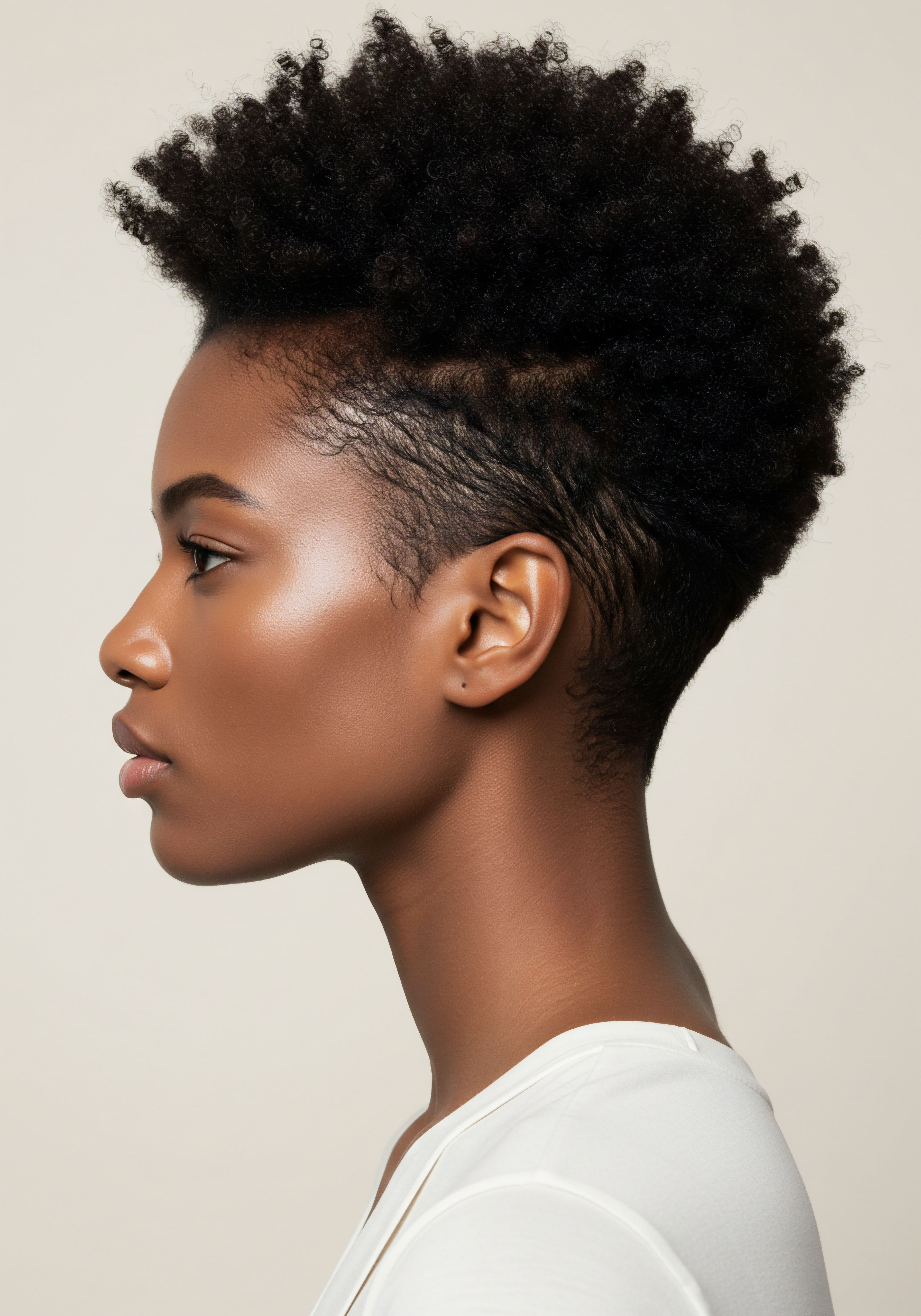
The Complete Textured Hair Toolkit
The right tools are extensions of our hands, helping us treat textured hair with the respect its cuticle demands. The choice of comb, brush, and accessories directly influences the preservation of the hair’s outermost layer.
- Wide-Tooth Combs ❉ These are essential for detangling curly hair, especially when wet and conditioned. Their broad spacing minimizes snagging and pulling, reducing the likelihood of lifting or tearing cuticle scales.
- Fingers ❉ Often the gentlest tools, using fingers for detangling or distributing products can significantly reduce mechanical stress on the cuticle. This method allows for a more intuitive approach, feeling for tangles and separating curls with minimal disruption.
- Microfiber Towels or T-Shirts ❉ Unlike traditional terrycloth towels, which can rough up the cuticle and lead to frizz, microfiber towels or old cotton t-shirts absorb excess water without creating friction. Blotting or gently squeezing hair instead of rubbing helps keep the cuticle smooth.
- Silk or Satin Pillowcases/Bonnets ❉ Cotton fabrics can create friction against hair strands, leading to cuticle damage, tangles, and frizz overnight. Switching to silk or satin pillowcases or wearing a bonnet reduces this friction, allowing the cuticle to remain smooth and undisturbed while sleeping. This small adjustment can yield considerable benefits for maintaining cuticle integrity and moisture retention.
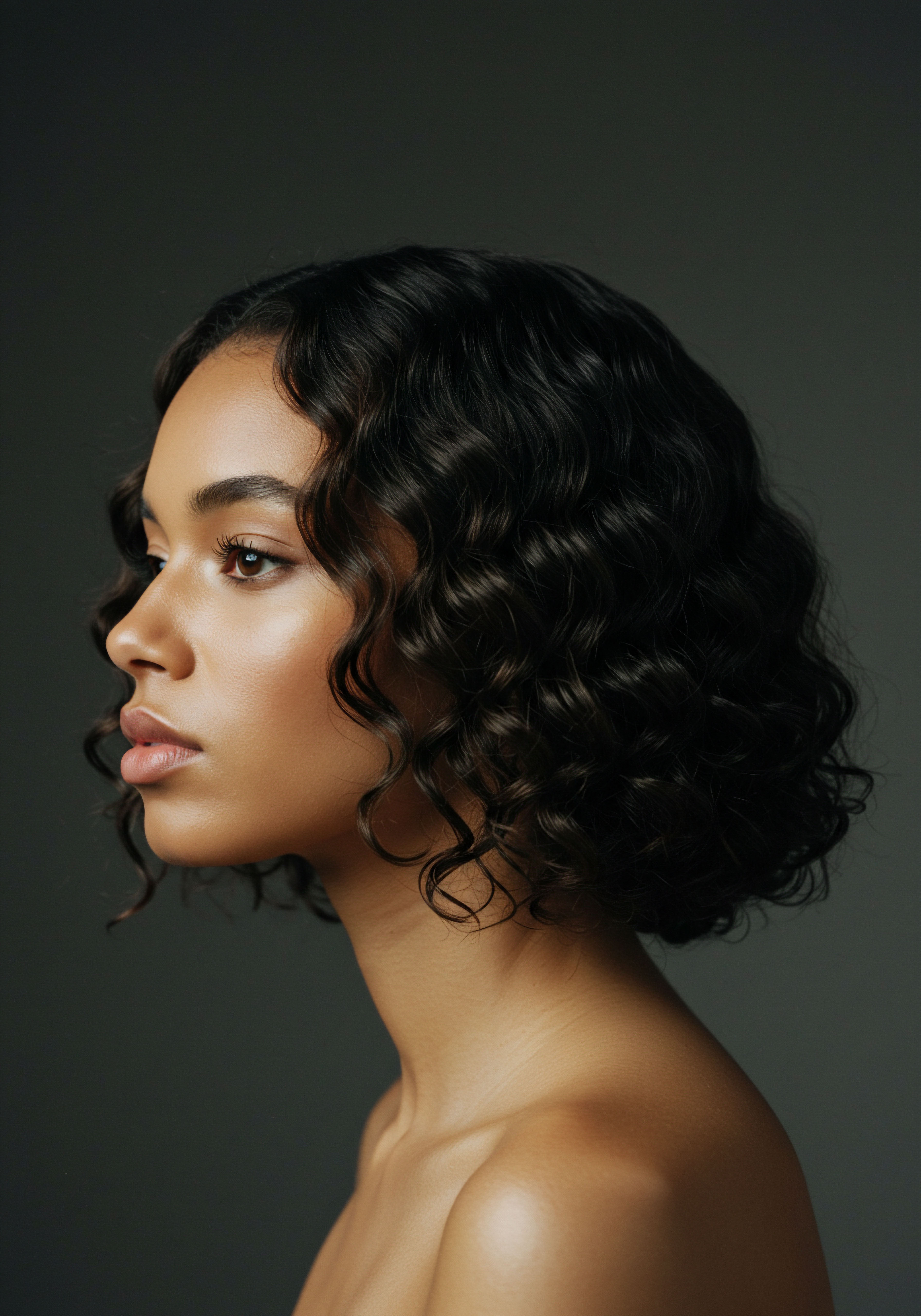
Relay
Now, we delve into the deeper currents of hair science and cultural context, a space where the intricate details of the cuticle’s function are illuminated by research and lived experience. Here, we move beyond surface understanding, exploring the profound interplay of biology, environment, and tradition that shapes the health and presentation of curly hair. This exploration is a testament to the complex, resilient nature of textured strands and the nuanced care they require.
The journey into the cuticle’s most sophisticated roles reveals how science validates practices passed down through generations, offering a more complete picture of hair’s dynamic relationship with its surroundings. We consider the microscopic world that dictates visible vitality, drawing connections between the unseen and the celebrated beauty of curls.
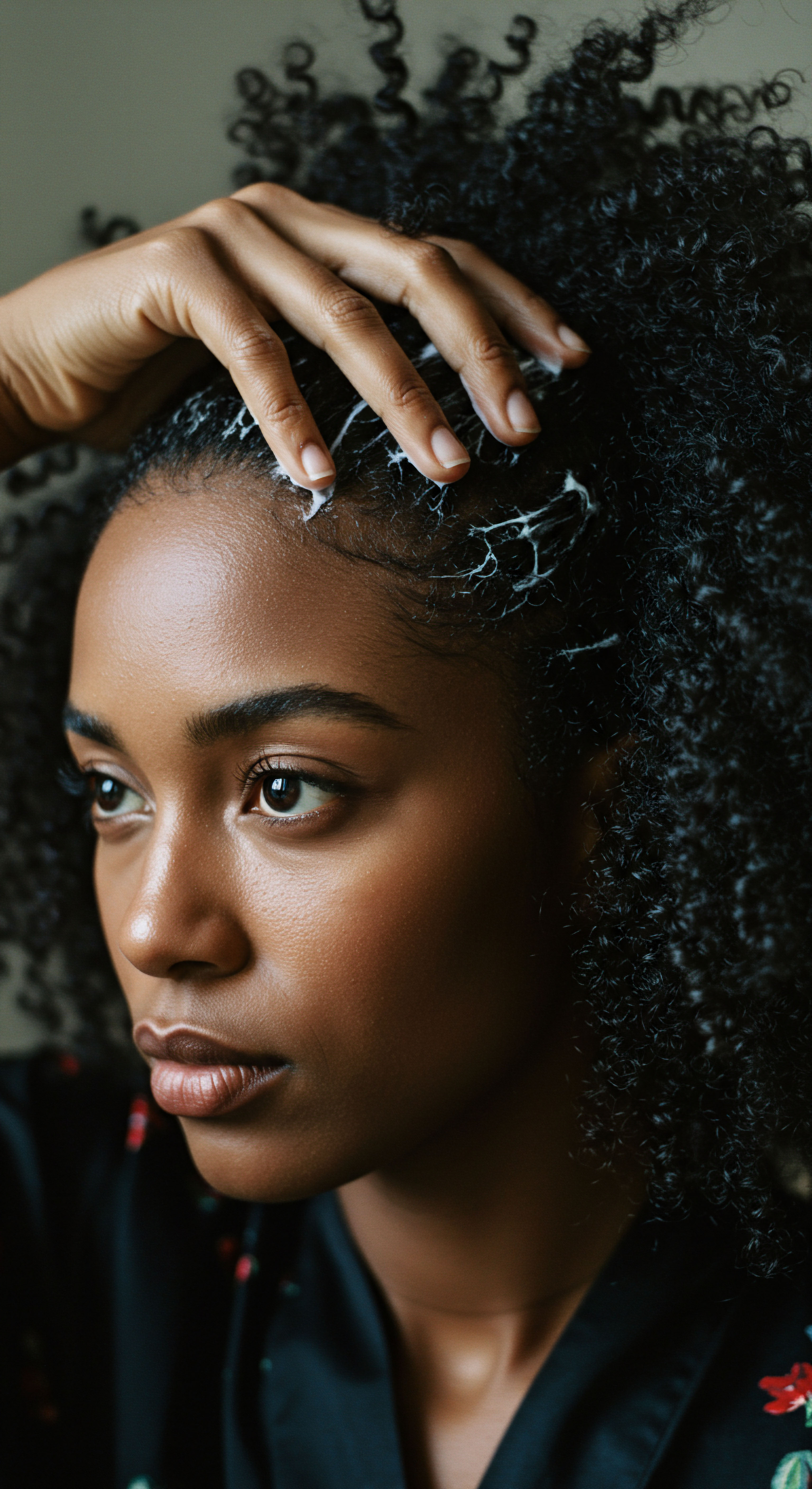
The Cuticle’s Molecular Shield
At its very core, the hair cuticle functions as a protective molecular shield for the inner cortex and medulla. This outermost layer, comprised of multiple overlapping keratinized cells, is designed to withstand external forces. Beyond its physical barrier role, the cuticle also possesses a hydrophobic nature, particularly due to its surface lipids. These lipids act as a natural water-repellent, aiding in moisture regulation by limiting excessive water uptake and loss.
However, this protective shield is not impervious. Chemical treatments, such as coloring, relaxing, or perming, can significantly alter the cuticle’s structure, causing the scales to swell, lift, or even break apart. This disruption compromises the hair’s ability to retain moisture and defend against further damage. Mechanical stressors, including vigorous brushing, tight hairstyles, or even friction from cotton pillowcases, also contribute to cuticle degradation over time.
Environmental factors, such as UV radiation, pollution, and extreme humidity or dryness, similarly weaken the cuticle, leading to increased porosity and susceptibility to damage. The integrity of this molecular shield is therefore a constant concern for hair health, particularly for textured hair which is inherently more prone to cuticle lifting.
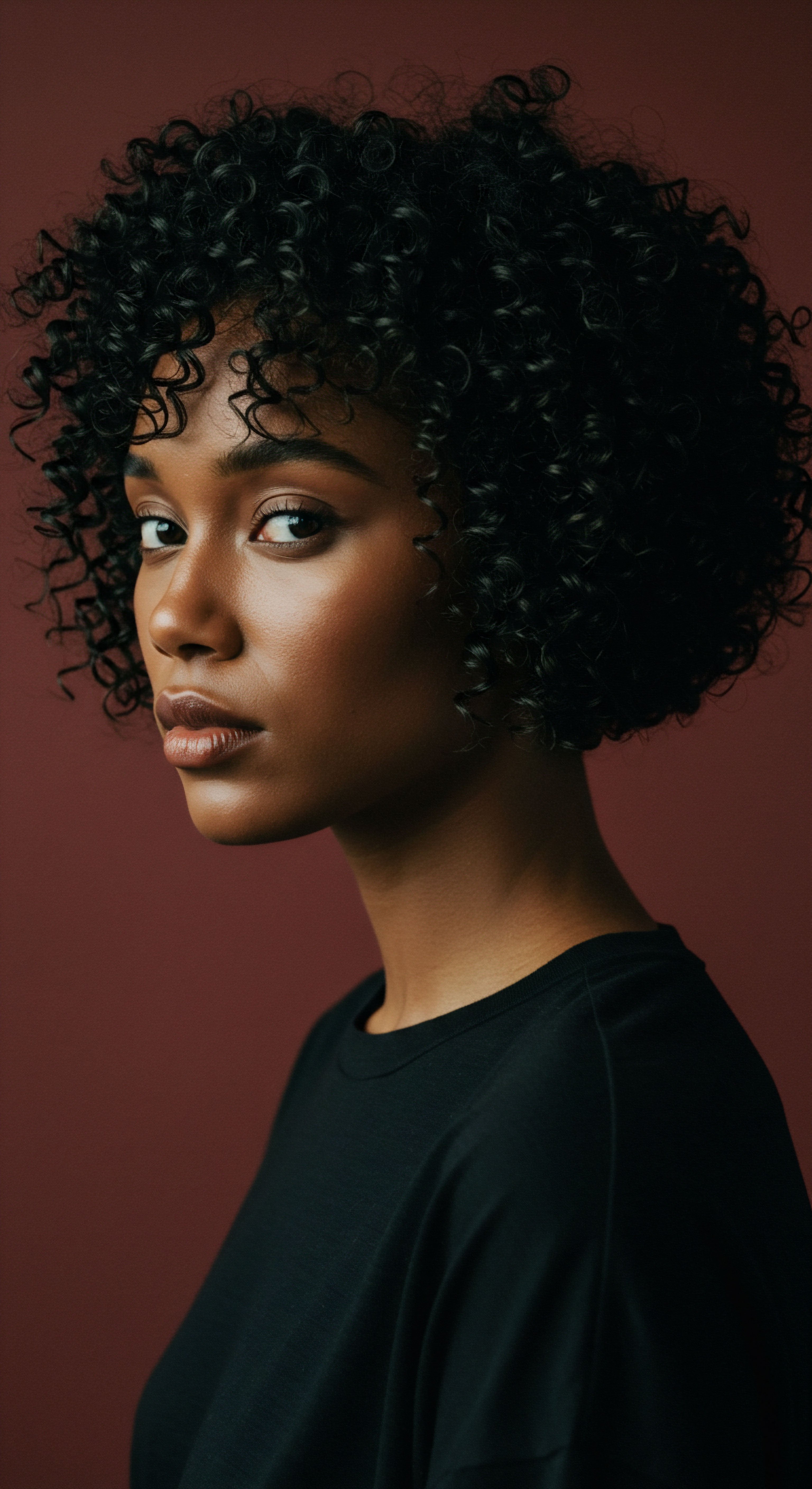
Does Cuticle Damage Affect Hair’s Mechanical Properties?
The condition of the cuticle directly correlates with the mechanical properties of hair, including its strength, elasticity, and susceptibility to breakage. When the cuticle is healthy and its scales lie flat, the hair strand presents a smooth, resilient surface that can withstand normal styling and environmental exposure. This smooth alignment minimizes friction between individual strands, allowing them to glide past one another without snagging or causing undue stress.
Conversely, when the cuticle is damaged, lifted, or compromised, the hair’s mechanical integrity diminishes. The raised scales create a rougher surface, leading to increased friction between strands and making the hair more prone to tangling and breakage. This is particularly true for curly hair, where the natural twists and turns already create points of vulnerability for cuticle lifting. Research indicates that repeated chemical processing can cause hair to lose a significant portion of its strength, with one study demonstrating a 50 percent strength reduction due to cuticle and cortex compromise.
When the cuticle is compromised, the inner cortex becomes exposed and vulnerable, leading to a loss of elasticity and increased fragility. This can result in split ends, mid-shaft breaks, and an overall thinning appearance of the hair.
A study published in the International Journal of Cosmetic Science in November 2021 confirms that rapid cuticle degradation significantly increases hair’s vulnerability to mechanical insults, compromising overall hair quality. This research highlights the critical role of the cuticle as the hair’s primary defense against physical forces, underscoring why its preservation is paramount for maintaining the mechanical resilience of textured hair.
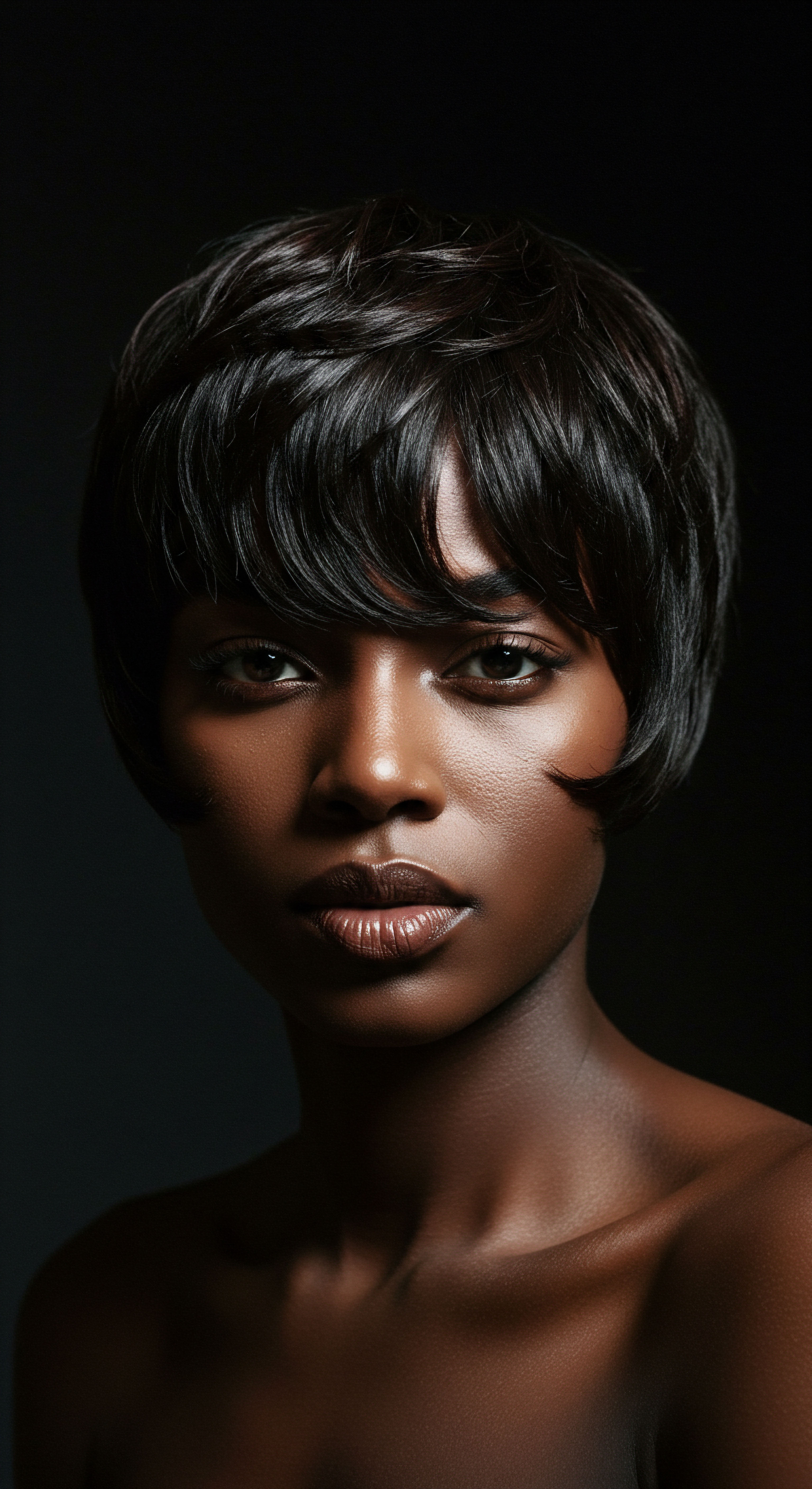
Hair Porosity and Lipid Layers
The cuticle’s surface is covered by a thin layer of lipids, primarily fatty acids, which play a crucial part in its hydrophobic (water-repelling) properties. These lipids contribute significantly to the hair’s natural barrier against excessive water absorption and moisture loss. In healthy hair, this lipid layer helps keep the cuticle scales smooth and sealed, regulating the passage of water and other substances into and out of the hair shaft.
However, various factors can compromise this protective lipid layer. Chemical treatments, such as bleaching and coloring, are known to strip hair of its lipids, leaving the cuticle more exposed and vulnerable. Environmental factors, including UV radiation, can also oxidize these surface lipids, further increasing hair porosity. When the lipid layer is disrupted, the cuticle scales become more prone to lifting, leading to increased water absorption and subsequent rapid drying.
This altered porosity makes hair more susceptible to hygral fatigue, the repeated swelling and shrinking of hair as it absorbs and loses water, which further damages the cuticle over time. Research by Keis et al. (2007) showed that oils remaining in the cuticle layer, not those penetrating the cortex, are responsible for reducing water uptake, underscoring the surface lipid layer’s importance in moisture regulation. Therefore, maintaining the integrity of the cuticle’s lipid layer through gentle care and appropriate conditioning is essential for managing porosity and preserving the health of curly hair.
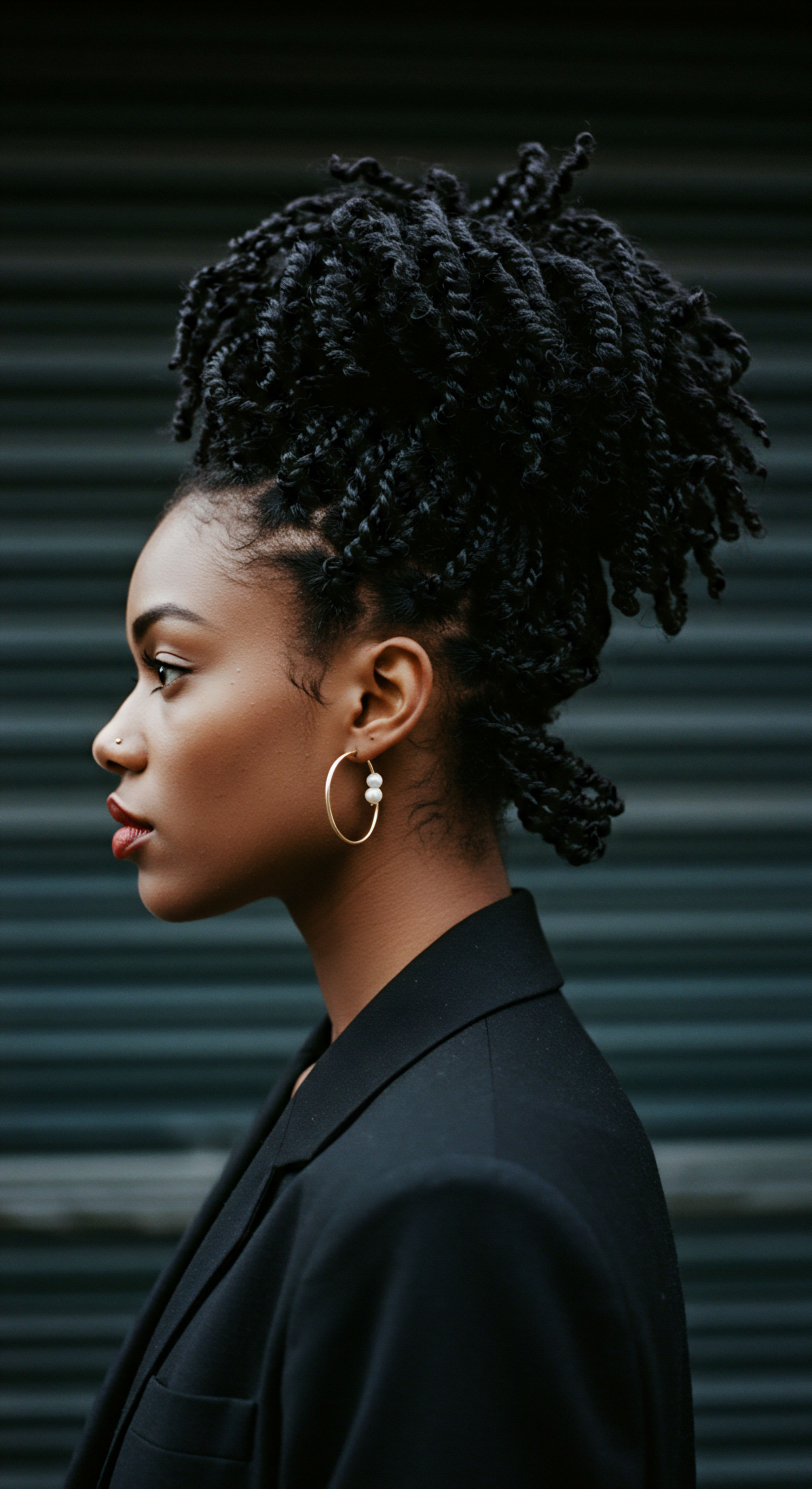
Environmental Factors and Cuticle Response
Curly hair’s cuticle, already prone to lifting, responds acutely to environmental shifts, particularly humidity. In highly humid conditions, hair absorbs excess moisture from the air. This absorption causes the hair shaft to swell, and because the cuticle scales are already somewhat raised, they lift further, leading to a rougher surface and the characteristic appearance of frizz. This swelling and shrinking with moisture fluctuations is known as hygral fatigue, a process that can repeatedly stress the cuticle and lead to damage over time.
Conversely, in very dry air, curls can lose their internal moisture rapidly if the cuticle is not effectively sealed, making the hair brittle and prone to breakage and split ends. UV radiation from sunlight also poses a threat, breaking down keratin bonds within the hair and causing deterioration of cuticle scales, diminishing their structural integrity. Pollution, too, can adhere to the hair surface, dulling its luster and potentially causing damage to the cuticle. These environmental interactions highlight the cuticle’s dynamic role as the hair’s first line of defense and the continuous need for protective measures to maintain its health and appearance in diverse climates.
The cuticle’s response to environmental changes, like humidity, directly impacts curl definition and hair’s susceptibility to stress.
| Environmental Factor High Humidity |
| Cuticle Response Cuticle scales lift further, hair swells |
| Observed Effect on Hair Increased frizz, loss of curl definition, hygral fatigue |
| Environmental Factor Low Humidity / Dry Air |
| Cuticle Response Moisture escapes rapidly if cuticle is open |
| Observed Effect on Hair Dryness, brittleness, increased breakage, split ends |
| Environmental Factor UV Radiation |
| Cuticle Response Degradation of cuticle scales, keratin bonds weaken |
| Observed Effect on Hair Loss of elasticity, color fading, structural damage |
| Environmental Factor Pollution |
| Cuticle Response Adherence to surface, potential penetration |
| Observed Effect on Hair Dullness, reduced luster, breakage over time |
| Environmental Factor External conditions exert considerable influence on the cuticle, dictating hair's hydration, appearance, and overall resilience. |

Reflection
As we draw our exploration to a close, it becomes clear that the cuticle of curly hair is far more than a simple outer layer. It is a testament to the hair’s inherent complexity and a mirror reflecting our care, our environment, and even our ancestral legacy. Each curl, with its unique pattern and its delicate cuticle, carries a story of resilience and beauty. The scientific understanding of its structure, coupled with the wisdom of mindful practices, offers a path toward a deeper connection with our strands.
To honor the cuticle is to honor the very life of our curls, allowing them to unfurl with their full, vibrant character. It is a continuous dance of observation, adjustment, and appreciative tending, leading to a hair journey that feels authentic and deeply rewarding.
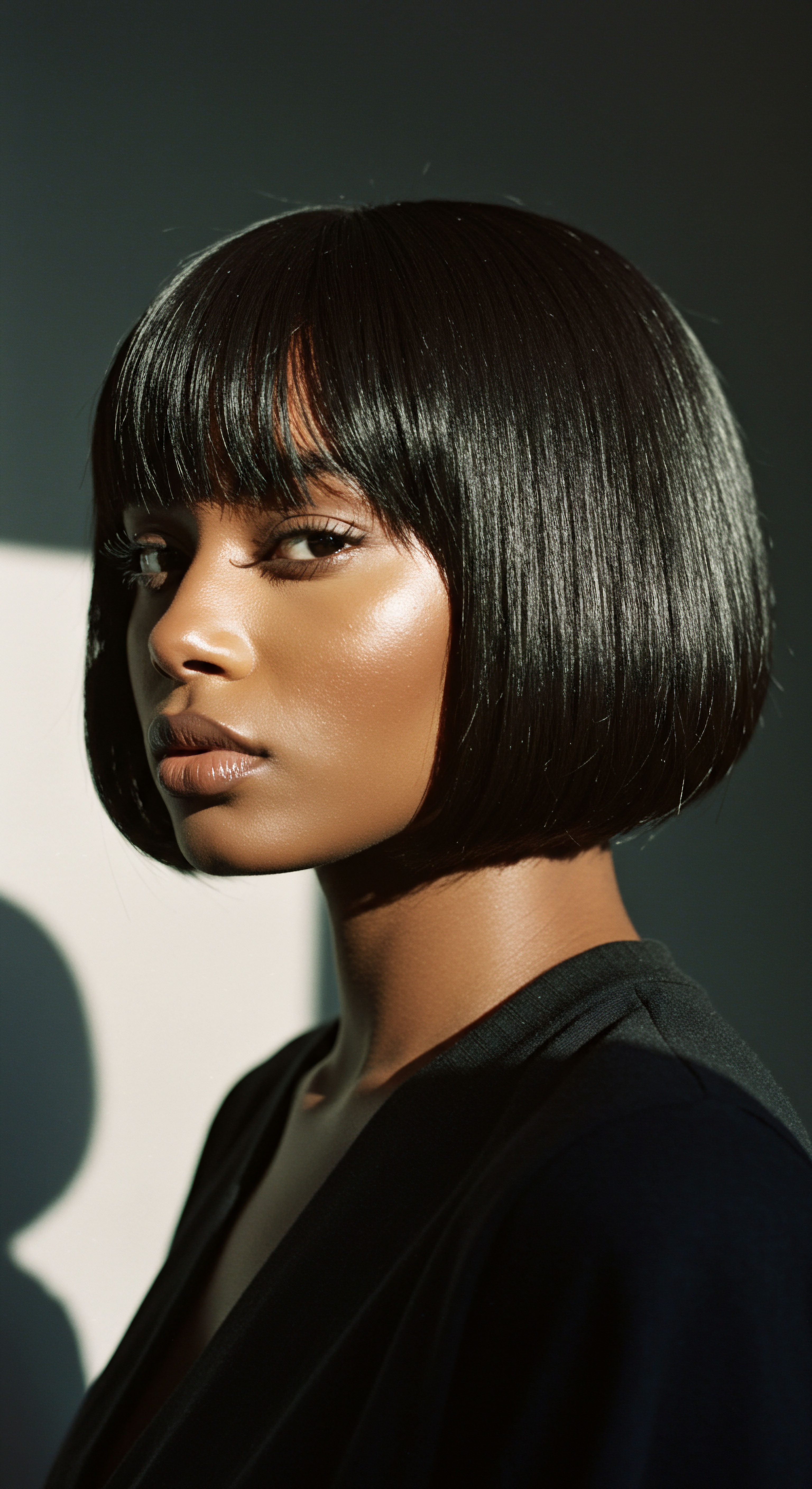
References
- Natural Hair Berlin. Curly Hair Science ❉ Understanding Hair Structure, Follicles & Porosity.
- Laifen-EU. What is the Hair Cuticle? Structure, Causes of Damage & Repair Tips.
- NYSCC. An Overview on Hair Porosity.
- Mulberry Park Silks. The Cuticle Cure ❉ How to Fight Frizz and Keep Your Hair Healthy.
- NaturallyCurly. The Cuticle is the First Line of Defense for Our Hair.
- Cays Curls. High Porosity Curly Hair.
- Redken. Science of Curly Hair.
- Redken US. Science of Curly Hair – Curl-principles – Education test – Professional.
- Tame It Curl Haus. The Anatomy of a Curl.
- Naturiam.ma. The Science Behind Hair Porosity.
- Curl Keeper. Ask the Expert ❉ Cutting Your Curly Hair and Frizzy Hair Issues.
- Science works to demystify hair and help it behave.
- Color Wow. What Is a Hair Cuticle? Let’s Ask Dr. Joe Cincotta.
- Color Wow. Reviving Your Curls ❉ A Step-by-Step Guide on How to Fix Damaged Curly Hair.
- Carpenter, Tara S. Why does your hair curl in the summer? A chemist explains the science behind hair structure.
- Noma Sana. Understanding Hair Porosity ❉ What It Means for Your Textured Hair.
- Mastering Curly Hair ❉ Secrets to Handling Environmental Challenges.
- Florae Beauty. Understanding Hair Porosity and Density ❉ A Guide to Health Hair.
- CURLY HAIR SCIENCE SERIES Pt.1. The Structure of Your Hair. YouTube.
- Reddit. r/HaircareScience. What actually is hair damage?
- Red Carpet Curls. The Science Behind Porosity & Naturally Textured Hair.
- Hairlust. The Best Products for Curly Hair + Top 4 Curly Hair Care Tips.
- Naturally Drenched. Understanding the Science Behind Low Porosity Curly Hair.
- My Hair Doctor. The Structure of Your Hair.
- Curl Queen. The Science Behind Curly Hair ❉ How Our Products Work.
- Blissy. What is Hair Cuticle? A Comprehensive Guide.
- Absolutely Everything Curly. Frizzy Hair No More ❉ Effective Remedies for Curly Hair.
- Dove. Ultimate Guide ❉ How To Repair Chemically Damaged Hair.
- Holy Curls. The main causes of breakage in curly hair – and how to prevent it.
- The Mane Objective. Natural Hair 101 ❉ How to Fix Damaged Curls.
- The Shade. How Hair Porosity Affects Hair Colour.
- TRI Princeton. Hair Moisturization Claims 101.
- Niwel Beauty. Focus on the cuticle, the protective barrier of our hair.
- Keswigs. Hair Cuticle and Hair Health.
- Pattern Beauty. De-stress Your Tresses ❉ 5 Types of Hair Damage.
- The Truth About Bleaching Curls ❉ My Personal Experience and Lessons Learned.
- Keis, K. et al. (2007). Effect of oil films on moisture vapor on human hair. International Journal of Cosmetic Science.